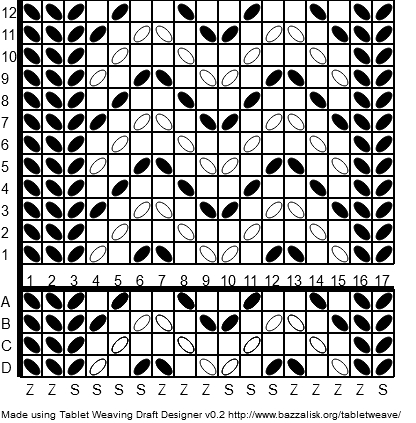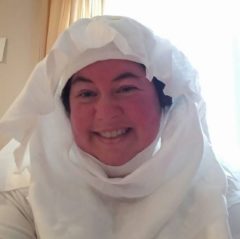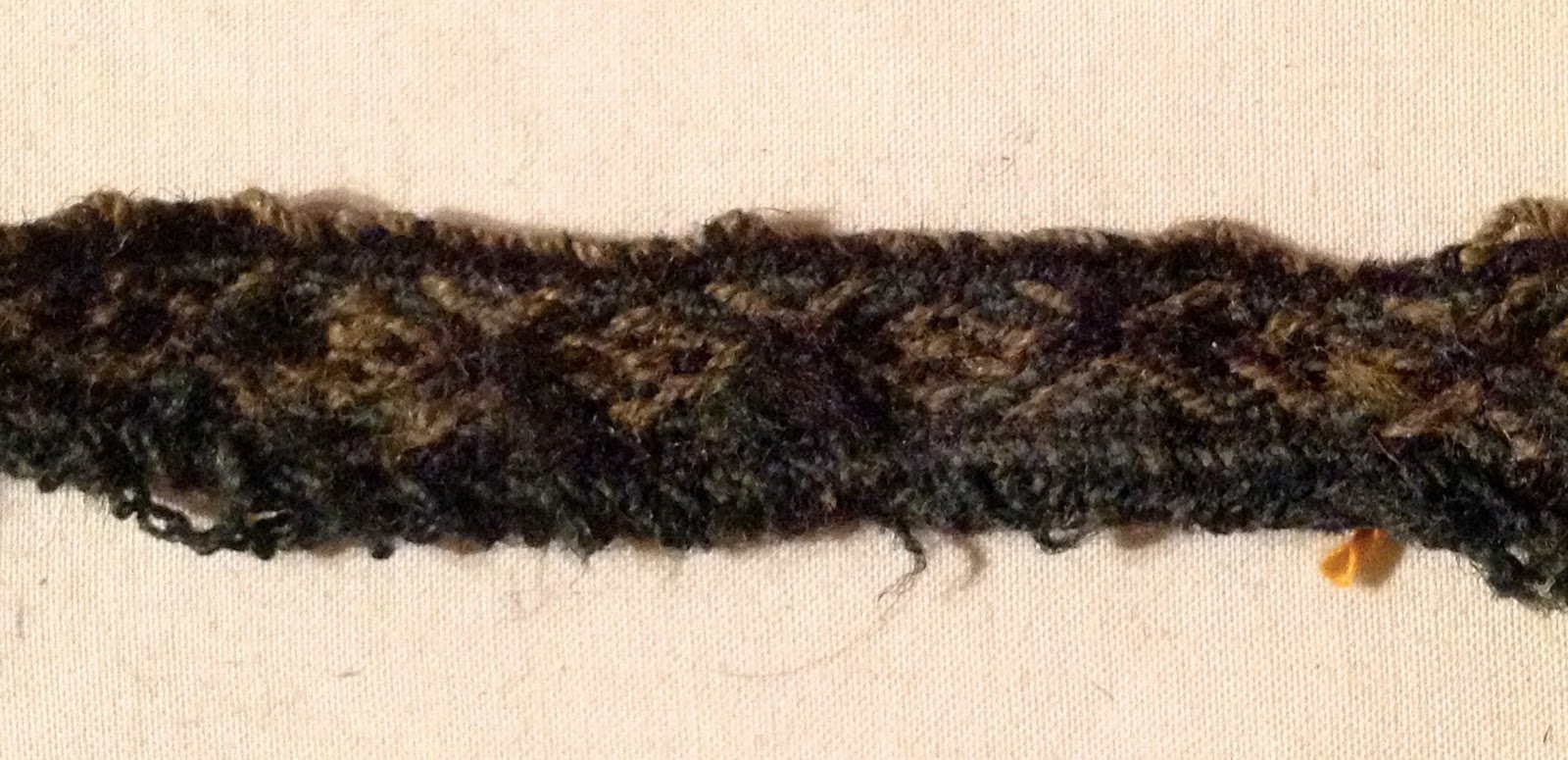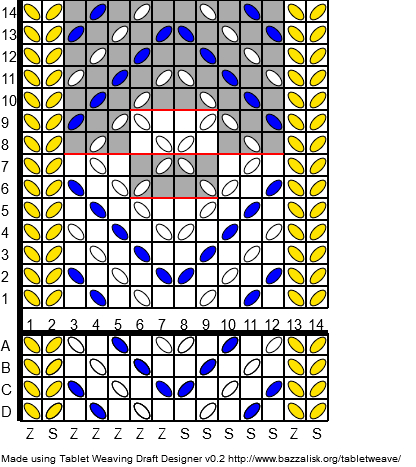The last video for the Hallstatt 152 skip hole may have been a bit too advanced for a beginner, so here is a very easy skip hole pattern for beginners!
The original band was found in Hægebostad in the southern part of Norway and dates to about 500 A.D. The tablets in the central area were threaded with only two threads per tablet, the border tablets with four.
The three graves at the Snartemo farm were excavated over an 85 year period, between 1847 and 1933, which uncovered a number of fantastic pieces, including a sword, glass beakers, gold rings and more, dating to about 500 AD. Grave II (excavated in 1878) and Grave V appeared to be those of a warrior nobleman, both containing remarkable textiles, including the bands we know as Snartemo II and Snartemo V, the latter being significantly more complex than the former. The simpler band from grave II was woven with 17 tablets in two colors of fine wool using the skip hole technique. It measures 0.9 cm, but colors have not been determined as no dye analysis has been done. Lisa Raeder Knudsen did a study of the extant piece and said, “In Bjørn Hougen’s book “Snartemofunnene” 1935 a drawing is shown, but the analysis is not correct.” More recent in-depth studies have been done very recently; the link is below.
As part of my Laurel Kingdoms project, this piece is celebrating the Kingdom of Meridies, which was created in 1978 from the Kingdom of Atenveldt in the Southeast United States. Its borders currently encompass the entirety of Alabama; almost all of Georgia; a sizeable chunk of Tennessee; a bit of Florida; and small portion of Kentucky. Their colors are black and white.

This pattern is completed by simply turning all the cards forward, throwing the shuttle after each quarter-turn. When the threads become over-twisted or after a chosen number of repeats–often I switch after 12 or 16 repeats–turn all cards backwards, throwing the shuttle after each quarter-turn. Easy as that!
Now, there is the new technique that was found in a recent discovery of a rolled hem. I could type up all the directions and details, but all of that can be found at their web site here: https://www.vestagdermuseet.no/snartemo-ii-narrow-band.
I hope you’re all enjoying this series and learning a lot in your weaving escapades! Let me know if there are more patterns you want to learn!
Elewys







